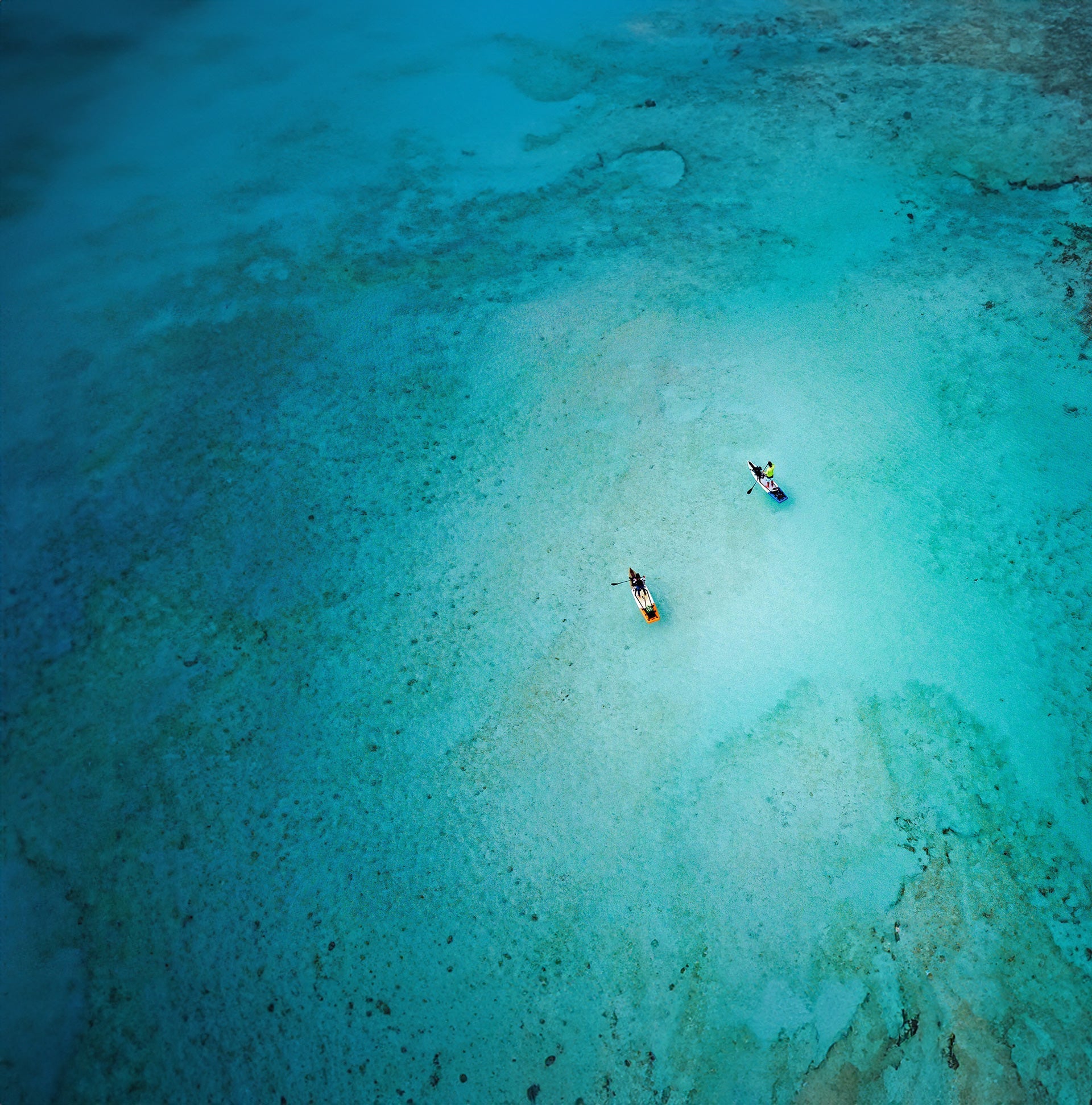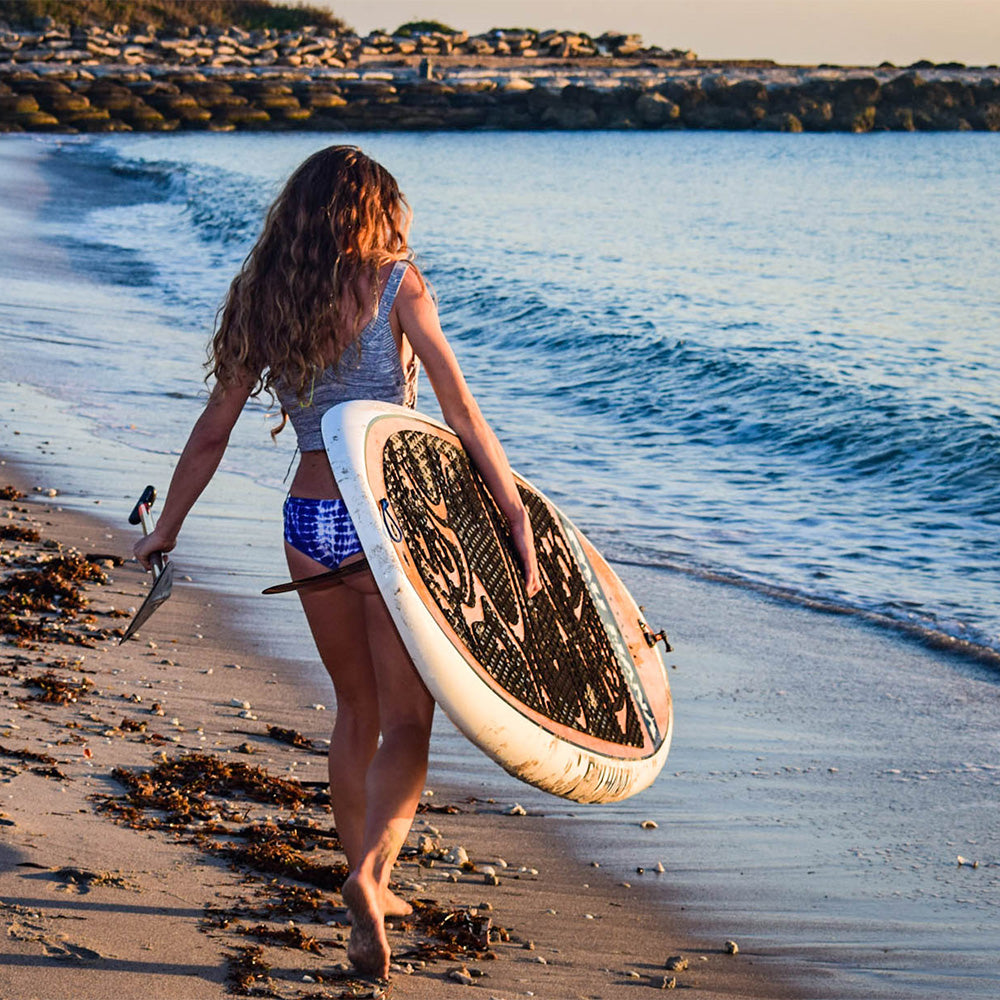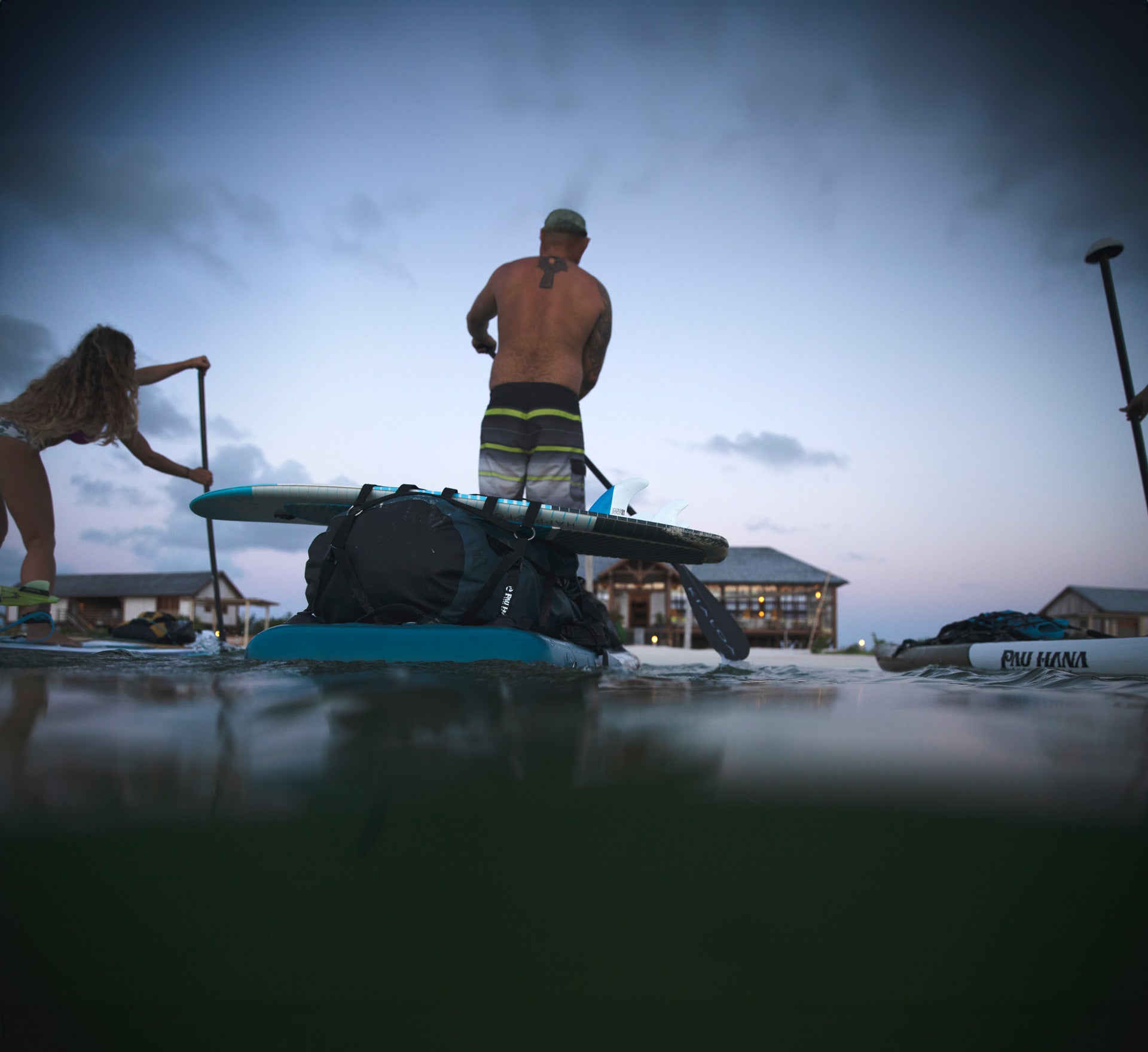Beginners Guide to Stand-Up Paddleboarding:
An Exciting Journey on Water
By Jen Chrimes

Welcome to the exciting world of Stand-Up Paddleboarding (SUP), a sport that marries the thrill of surfing with the contentment of being on the water. If you're new to this exhilarating activity, you're in for a treat. Our beginners guide to stand-up paddlebaording aims to introduce beginners to the joys of paddleboarding, providing essential insights to get you started on this fantastic water adventure.
Read our 2024 guide to paddleboarding
What Exactly is Stand-Up Paddleboarding (SUP)?
SUP, or Stand-Up Paddleboarding, is an innovative water sport that originated in the sunny shores of Hawaii. It's an offshoot of traditional surfing where enthusiasts stand on a specialized board and use a paddle to navigate the water. This sport offers diverse experiences - from serene flat water paddling to dynamic SUP yoga, adventurous touring, exciting racing, and even fishing. Stand-Up Paddleboarding has quickly evolved into a widely accessible activity, suitable for all ages and skill levels. It's not only a fun way to enjoy the outdoors but also a full-body workout, allowing access to beautiful, often secluded waterways.
Is Paddleboarding Difficult to Learn?
Paddleboarding is wonderfully accommodating for beginners. Now is the perfect time to dive in, with a plethora of products and resources available. Many SUP clubs and instructors offer lessons and advice, though they are not mandatory. With a few essential tips, you can soon experience the liberating sensation of gliding over water on a paddleboard.
Choosing the Right Paddleboard: A Guide
Selecting an appropriate paddleboard is crucial. It's beneficial to seek advice from local dealers or conduct online research to understand which board suits your size and skill level. Ideal for beginners are "all-around" boards, usually 10’-12’ long with a planning hull, offering greater stability. They come in both inflatable and hard constructions. Inflatable boards are convenient for travel and storage, fitting easily in a car trunk. Hard boards, on the other hand, require roof transportation. When choosing a board, consider your weight, as most manufacturers provide volume and capacity details on their websites.
Essential Gear for Stand-Up Paddleboarding
- The Paddleboard: The heart of the sport.
- The Paddle: Designed with a long shaft, T-grip, and tear-drop-shaped blade. Adjustable in length for comfort.
- Personal Floatation Device (PFD): A must-have safety gear, often legally required. Choose a comfortable, non-restrictive option.
- Paddleboard Leash: Keeps your board within reach if you fall off. Opt for a longer, coiled leash like the Pau Hana 10’ Coiled Leash.
- Appropriate Clothing: Dress for the weather and water conditions. Wetsuits for cold water, light clothing for warm days, and don’t forget sunscreen and sunglasses.
Basic Paddleboarding Techniques
- The Forward Stroke: Start standing or kneeling, maintaining a shoulder-width stance. Use the center handle of the board as a reference. Alternate strokes on either side of the board, keeping your knees soft and the paddle horizontal.
- Turning the Board: Employ a sweeping C-shaped stroke to steer the board in the opposite direction.
- Backward Paddling: Useful for docking or maneuvering around obstacles. Execute by pushing the blade away from your body at hip level.
Recovering from a Fall
Falling off is part of the learning process and nothing to worry about. When you fall, remain calm. Use the center handle of the board as a reference to distribute your weight evenly. First, pull yourself onto the board face down, then transition to your knees before carefully standing up, using the paddle for stability.
Beginning Your Paddleboarding Adventure
As you begin on your paddleboarding journey, remember that every stroke brings a new experience and an opportunity to connect with nature in a unique way. Embrace the learning curve and enjoy the serene, yet exhilarating world of stand-up paddleboarding.
Happy Paddling to all aspiring SUP enthusiasts!
BEGINNER PADDLEBOARDING FAQs
What is the best time of year to start paddleboarding?
The ideal time to start paddleboarding largely depends on your local climate. In warmer regions, paddleboarding can be enjoyed year-round. However, in areas with distinct seasons, late spring through early fall is typically best, offering warmer waters and more comfortable conditions.
Do I need to be a good swimmer to paddleboard?
While being a proficient swimmer is beneficial for safety, it's not an absolute requirement. It's essential, however, to be comfortable in the water. Always wear a Personal Floatation Device (PFD) and paddle within your limits.
How long does it take to learn stand-up paddleboarding?
Most beginners can get the basics down in a few hours. However, becoming proficient in different techniques, like turning and handling various water conditions, might take several sessions.
Can children participate in paddleboarding?
Absolutely! Paddleboarding is a family-friendly activity. Ensure children are always supervised, wearing appropriate safety gear, and using equipment suitable for their size.
Is paddleboarding a good workout?
Yes, paddleboarding is an excellent full-body workout. It engages your core, improves balance, builds endurance, and tones muscles, all while being low-impact.
What should I do if I encounter wildlife while paddleboarding?
If you're lucky enough to encounter wildlife, maintain a respectful distance to avoid disturbing them. Always follow local guidelines for wildlife interactions.
Can I paddleboard if I have never surfed before?
Definitely! Paddleboarding is distinct from surfing and is often easier for beginners to learn. It requires different skills and is more accessible in various water conditions.
What should I wear for my first paddleboarding experience?
Dress according to the weather and water temperature. In warm conditions, light, quick-drying clothing is ideal. In colder waters, a wetsuit may be necessary. Don’t forget a hat, sunglasses, and sunscreen.
How do I transport my paddleboard?
Inflatable paddleboards can be deflated and transported in a bag. Hard boards require a vehicle with a roof rack or a large enough space to carry the board securely.
Are there different types of paddleboards?
Yes, there are several types, including all-around, touring, racing, yoga, and fishing paddleboards. All-around boards are best for beginners due to their stability and versatility.










